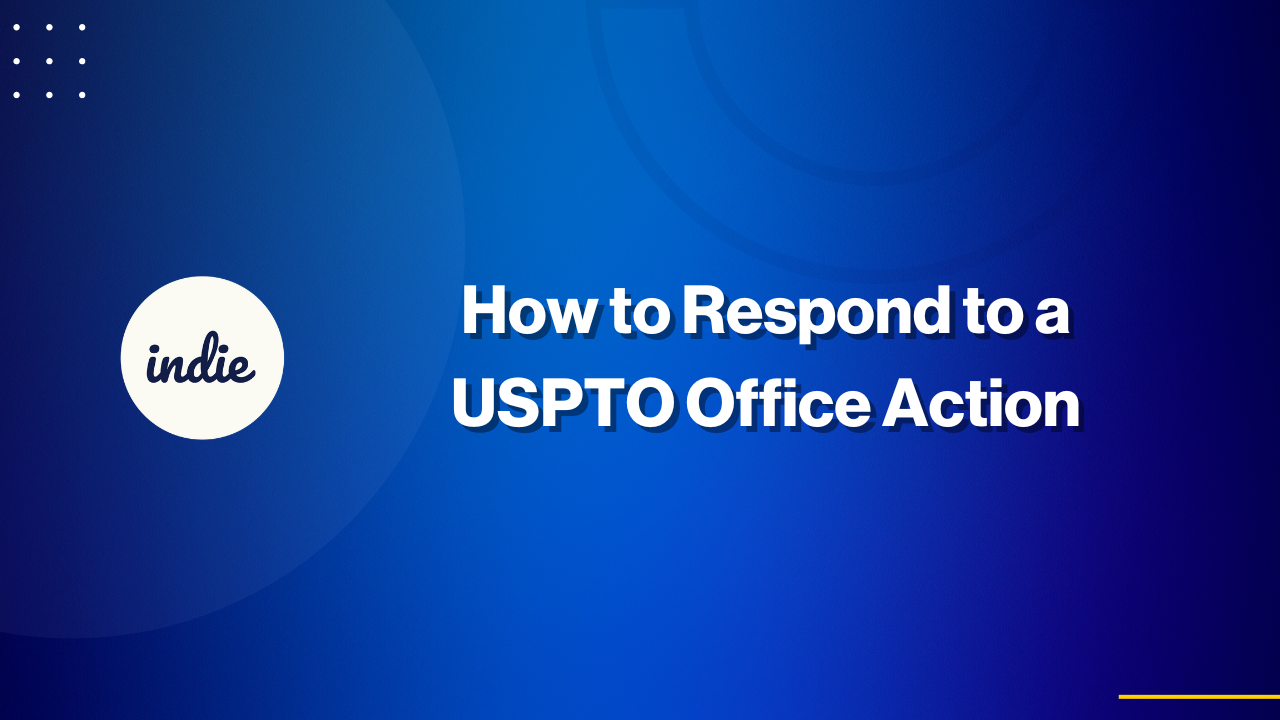What Is a USPTO Office Action?
A USPTO Office Action is an official letter from the U.S. Patent and Trademark Office indicating problems or concerns with your trademark application. Think of it as a request for clarification, correction, or more information.
Stat: In 2023, the USPTO’s approval rate for trademark applications was about 54%.
There are two types of Office Actions:
-
Non-Final: Initial issues and objections
-
Final: Issued only if your first response didn’t fully resolve the issues
Why You Might Receive an Office Action
Common reasons include:
- Likelihood of Confusion – Your mark is too similar to an existing one.
- Descriptiveness – The mark merely describes the product or service, lacking distinctiveness.
- Improper Specimen – The proof you submitted doesn’t meet USPTO requirements.
- Missing Information – Such as a business type or a complete goods/services description.
- Technical Errors – Examples: incorrect classification, form mistakes, formatting issues.
Tip: The USPTO usually explains the issue clearly, but the legal jargon can be confusing. Consider consulting a trademark attorney for help.
Step-by-Step: Responding to a USPTO Office Action
1. Read the Office Action Carefully
Look for the specific legal issue(s), any evidence cited (e.g., similar marks), and the deadline to respond. You typically have 3 months from the issue date, with a one-time 3-month extension available for a $125 fee.
2. Identify the Type of Issue
Minor issues like disclaimers can be corrected easily. More serious issues, such as likelihood of confusion, may require detailed legal arguments.
3. Gather Evidence or Make Changes
Depending on the issue:
-
Likelihood of Confusion: Show how your mark differs in appearance, sound, meaning, or market.
-
Descriptiveness: Argue uniqueness or evidence of acquired distinctiveness.
-
Specimen Problems: Submit a new specimen showing actual use in commerce.
-
Technical Errors: Correct classification or typos in the response form.
Pro Tip: Use strong, fact-based arguments and adhere to proper formatting.
4. Draft Your Response
File using the USPTO’s TEAS Response form. Include a concise statement explaining your changes or legal arguments, supporting documents or evidence, and revised materials if required.
5. Submit on Time
Failure to respond by the deadline typically leads to abandonment of your application—you’ll have to file again and pay the fees.
After You Respond
The examining attorney will review your response. Possible outcomes include:
-
Approved: Application moves to publication in the Official Gazette
-
Further Office Action: You may receive another letter if more issues remain
-
Final Refusal: If your response didn’t fix the issue, the USPTO issues a final denial
-
Appeal: You can appeal final refusals to the Trademark Trial and Appeal Board (TTAB)
Should You Get Legal Help?
You can respond on your own, but many Office Actions require strategic legal thinking. Benefits of hiring a trademark attorney include improved chances of approval, persuasive legal arguments, saving time and reducing stress, and avoiding costly procedural or argumentative errors.
Stat: Based on Stanford Law research (1984–2012), applications filed by attorneys reached publication at a rate of 82% vs. 60% for pro se applicants—an increase of 37%. Registration rates improved from 42% (pro se) to 60% (attorneys)—a 43% boost.
Common Mistakes to Avoid
-
Ignoring the Office Action or missing the deadline
-
Sending incomplete or unclear responses
-
Failing to address all raised issues
-
Submitting weak or irrelevant evidence
-
Using incorrect forms or class codes
Final Thoughts
An Office Action doesn’t mean your trademark is dead—it just means you need to fix a problem. Follow these steps: read carefully, identify the problem, gather evidence or make necessary corrections, and submit a strong, professional response on time. If you’re unsure or overwhelmed, a trademark attorney can significantly improve your chances. With thoughtful attention and the right help, your application can move forward on solid footing.

